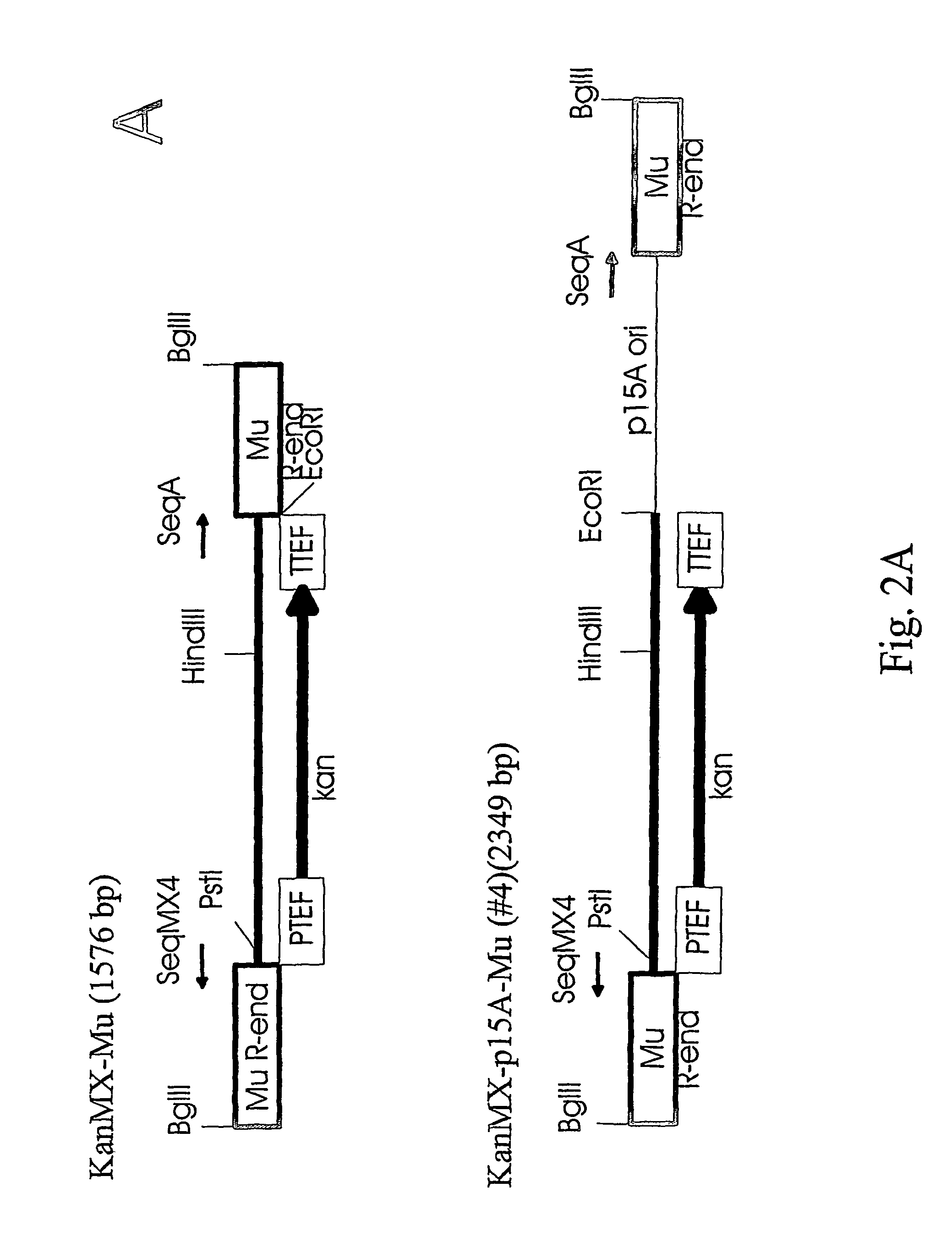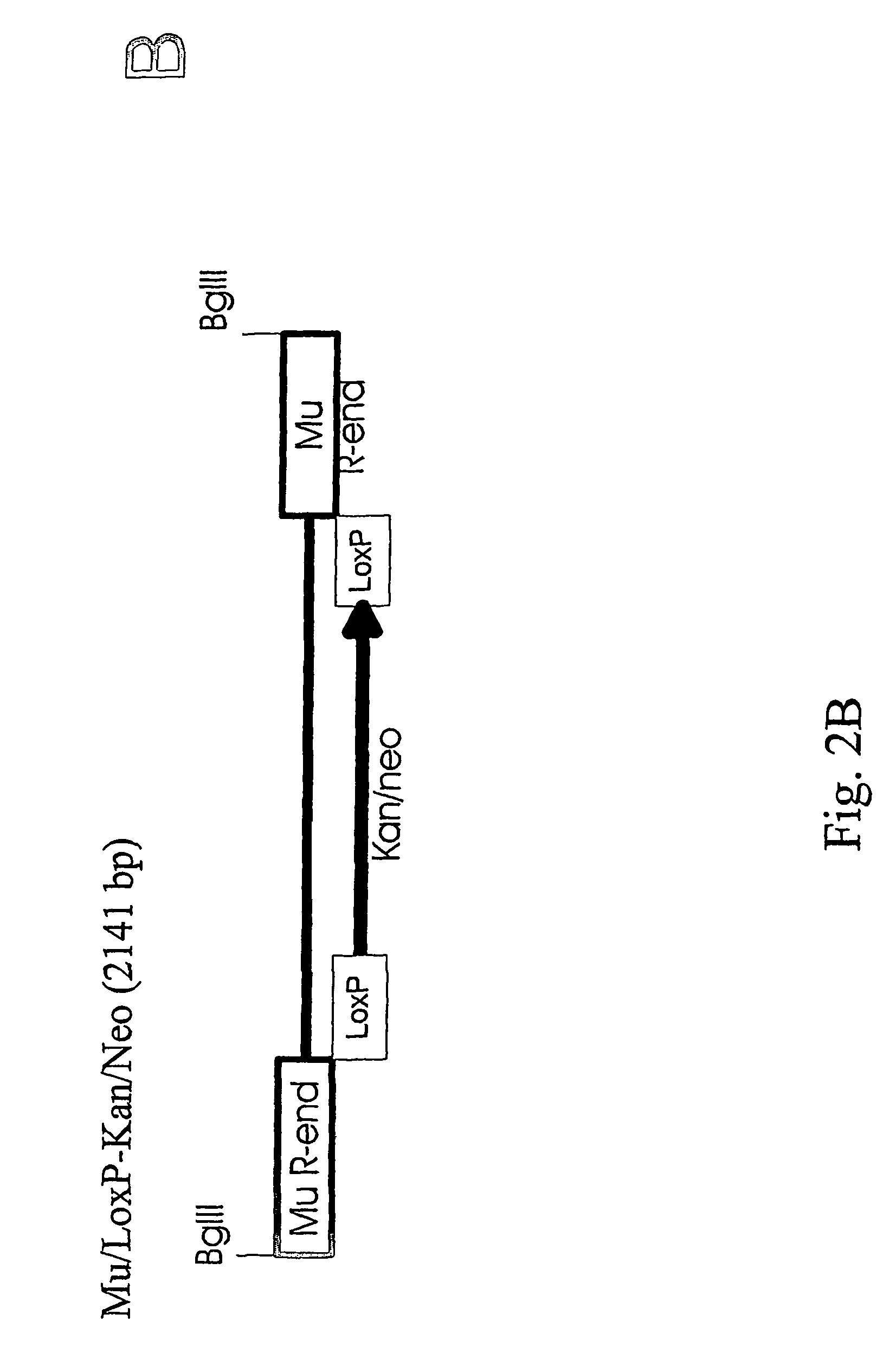Delivery of nucleic acids into eukaryotic genomes using in vitro assembled Mu transposition complexes
- Summary
- Abstract
- Description
- Claims
- Application Information
AI Technical Summary
Benefits of technology
Problems solved by technology
Method used
Image
Examples
Embodiment Construction
The in vitro assembled transposition complex is stable but catalytically inactive in conditions devoid of Mg2+ or other divalent cations (Savilahti et al., 1995; Savilahti and Mizuuchi, 1996). After electroporation into bacterial cells, these complexes remain functional and become activated for transposition chemistry upon encountering Mg2+ ions within the cells, facilitating transposon integration into host chromosomal DNA (Lamberg et al., 2002). The in vitro preassembled transpososomes do not need special host cofactors for the integration step in vivo (Lamberg et al., 2002). Importantly, once introduced into cells and integrated into the genome, the inserted DNA will remain stable in cells that do not express MuA (Lamberg et al., 2002).
To study if the Mu transposition system with the in vitro assembled transpososomes works also for higher organisms we constructed transposons (antibiotic resistance markers connected to Mu ends), assembled the complexes and tested the transposition...
PUM
 Login to View More
Login to View More Abstract
Description
Claims
Application Information
 Login to View More
Login to View More - R&D
- Intellectual Property
- Life Sciences
- Materials
- Tech Scout
- Unparalleled Data Quality
- Higher Quality Content
- 60% Fewer Hallucinations
Browse by: Latest US Patents, China's latest patents, Technical Efficacy Thesaurus, Application Domain, Technology Topic, Popular Technical Reports.
© 2025 PatSnap. All rights reserved.Legal|Privacy policy|Modern Slavery Act Transparency Statement|Sitemap|About US| Contact US: help@patsnap.com



